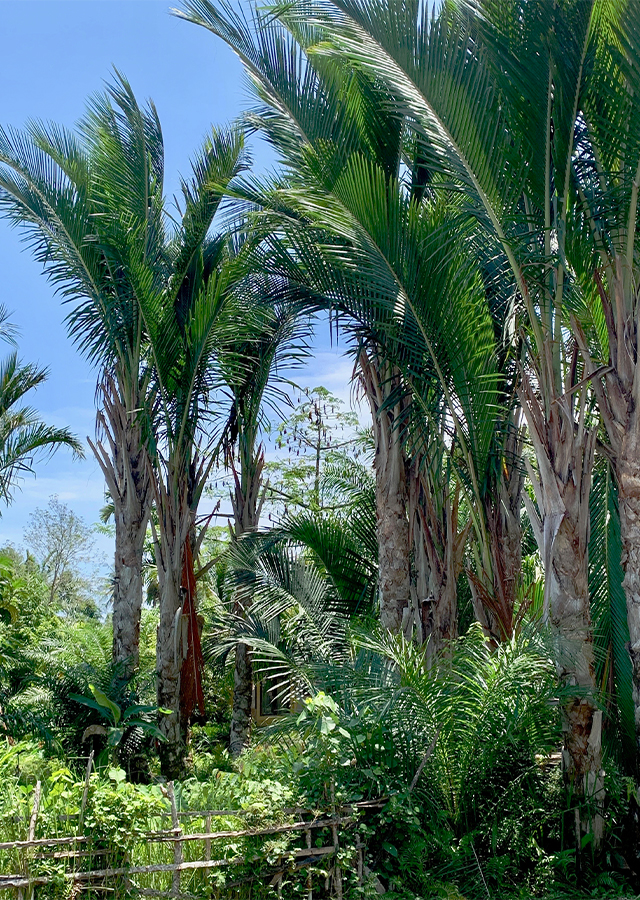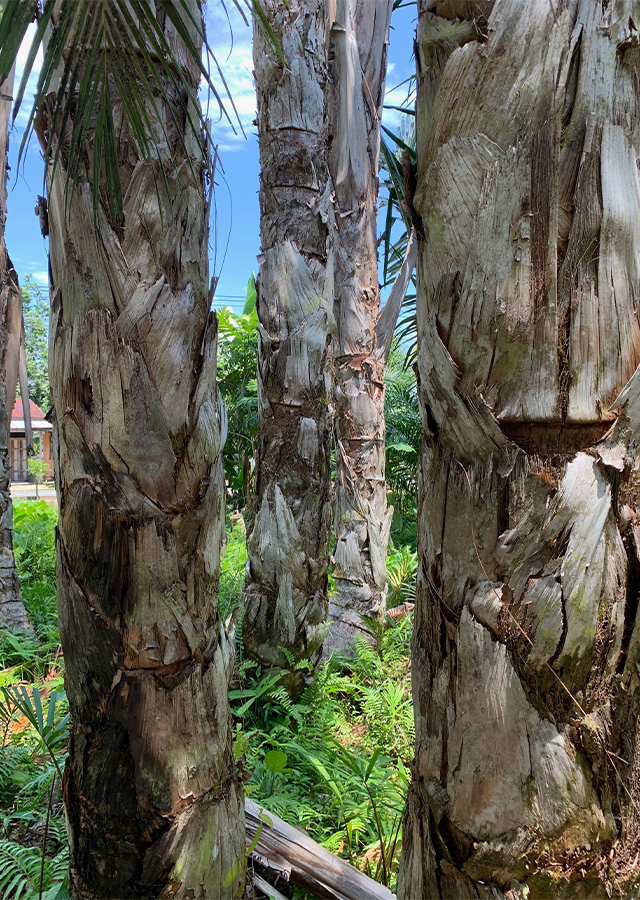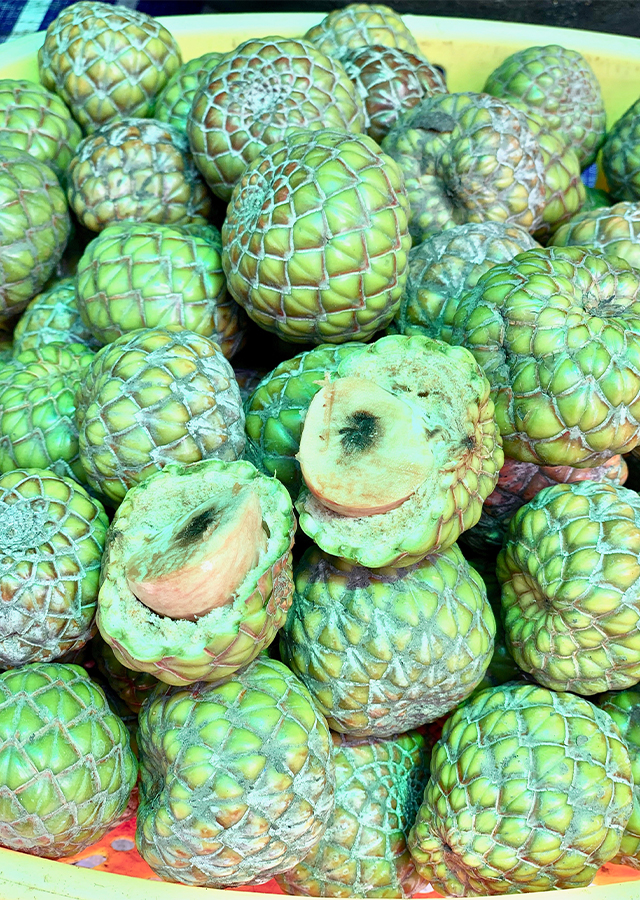Traditional Herbs from Metroxylon sagu
low_calorie_diet_pudding
- Prepare 200 g ambon sago, soak for 2 hours, 1 tsp lemon peel, 1 egg white, 600 ml coconut milk, 60 g palm sugar, 1 stalk lemongrass (crushed).
- Sauce: 200 g small sliced ??red guava, 2 tablespoons chopped ginger, 100 ml boiled water, 50 g granulated sugar.
- Grease the mold with vegetable oil. Mix coconut milk, sugar, lemongrass, and orange peel, cook while stirring until thickened and clear. Remove the lemongrass from the sago.
- Beat the egg whites until stiff, slowly add to the sago mixture while stirring thoroughly mold, and leave until cool and frozen (10-15 pieces). Remove from the mold Sauce: puree the guava with a blender, cook over low heat with ginger, water and sugar. Serve the pudding with the sauce 115 calories).
wound
- Take enough rumbia leaves, wash them until clean.
- Pound the leaves until smooth.
- Put them on the wound.
What is Metroxylon sagu Looks like??



Parts of Metroxylon sagu that could be used
- Leaves
- Fruit
- Roots
- Stem
Metroxylon sagu Distribution
Rumbia is a plant native to Southeast Asia. Widespread throughout West Melanesia to East India and from Northern Mindanao to the island of Java and southern Nusa Tenggara. Other sources say that rumbia comes from Papua or Maluku. Rumbia is also a potential source of carbohydrates in Indonesia, especially in the eastern region of Indonesia. Generally, rumbi is used as food, medicinal plants, roofs and walls of houses, household utensils, and the tops of the leaves can be consumed as vegetables.Agroecology of Metroxylon sagu
Generally, it is found in swamps, peat soil, river banks, near lakes, and wet soil. Grows in lowland areas up to an altitude of 700 m above sea level, rainfall 2,500−3,000 mm/year, optimal temperature 24.50−29 �C. Likes volcanic, latosol, andosol and podzolic soil types which are rich in organic matter with a soil pH range of 5.5-6.5.
Morphology of Metroxylon sagu
- Cylinder stem, large, contains starch and unbranched stem.
- Leaves are elongated (lanceolatus) similar to coconut leaves, the midrib or base of the leaf stalk is wide. The edge of the leaf is sharp and turns inward. The leaves are yellowish green.
- Compound flowers, arranged in dense panicles, small, brownish red.
- Fruit is scaly, yellowish brown, oval like a flat ball. Old fruit is ivory yellow.
Cultivation of Metroxylon sagu
- Generative propagation (seeds) comes from old fruit. After sowing, the seeds can be transplanted at the age of 6-12 months after planting.
- Vegetative propagation, comes from saplings attached to the base of the parent stem.
- Square plant spacing 8 x 8 m or 9 x 9 m optimum population 150 trees/ha.
Metroxylon sagu, more details :
Chemical Content of Metroxylon saguAlkaloids, flavonoids, tannins, phenolics, starch.
Benefits of Metroxylon sagu
Hypertension, antibacterial, diarrhea, antioxidant, improving blood circulation, headaches, maintaining immunity, headaches, treating burns, spleen medicine, diet.
Simplisia of Metroxylon sagu
Another Facts for Metroxylon sagu :
Synonym of Metroxylon saguMetroxylon hermaphroditum Hassk., Metroxylon inerme (Roxb.) Mart., Metroxylon laeve (Giseke) Mart.
Habitus of Metroxylon sagu
Palm. Annual palm, reaching 16-20 m in height
Habitat of Metroxylon sagu
- Wetland
- Forest
No comments:
Post a Comment